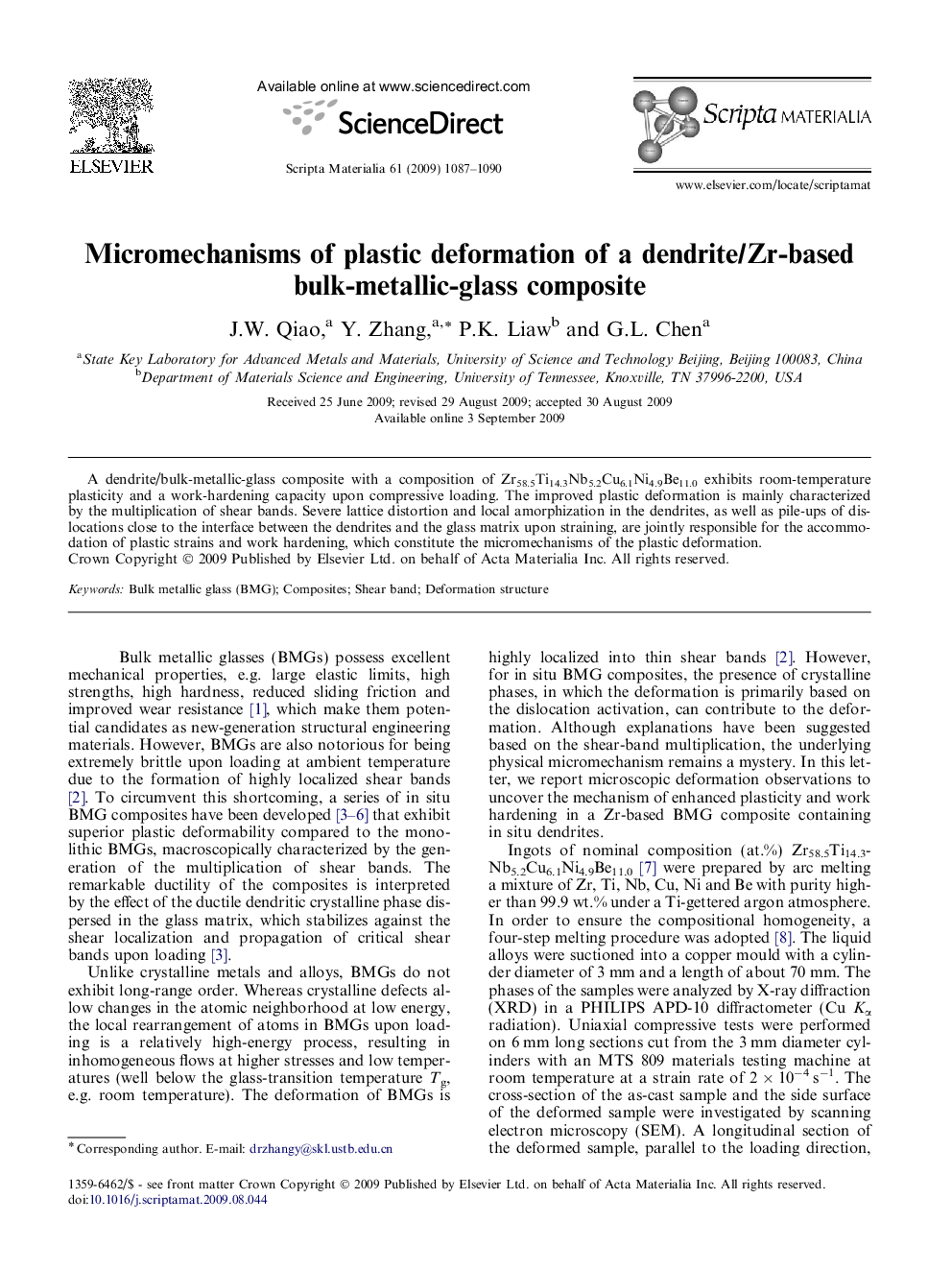| Article ID | Journal | Published Year | Pages | File Type |
|---|---|---|---|---|
| 1501976 | Scripta Materialia | 2009 | 4 Pages |
Abstract
A dendrite/bulk-metallic-glass composite with a composition of Zr58.5Ti14.3Nb5.2Cu6.1Ni4.9Be11.0 exhibits room-temperature plasticity and a work-hardening capacity upon compressive loading. The improved plastic deformation is mainly characterized by the multiplication of shear bands. Severe lattice distortion and local amorphization in the dendrites, as well as pile-ups of dislocations close to the interface between the dendrites and the glass matrix upon straining, are jointly responsible for the accommodation of plastic strains and work hardening, which constitute the micromechanisms of the plastic deformation.
Related Topics
Physical Sciences and Engineering
Materials Science
Ceramics and Composites
Authors
J.W. Qiao, Y. Zhang, P.K. Liaw, G.L. Chen,
